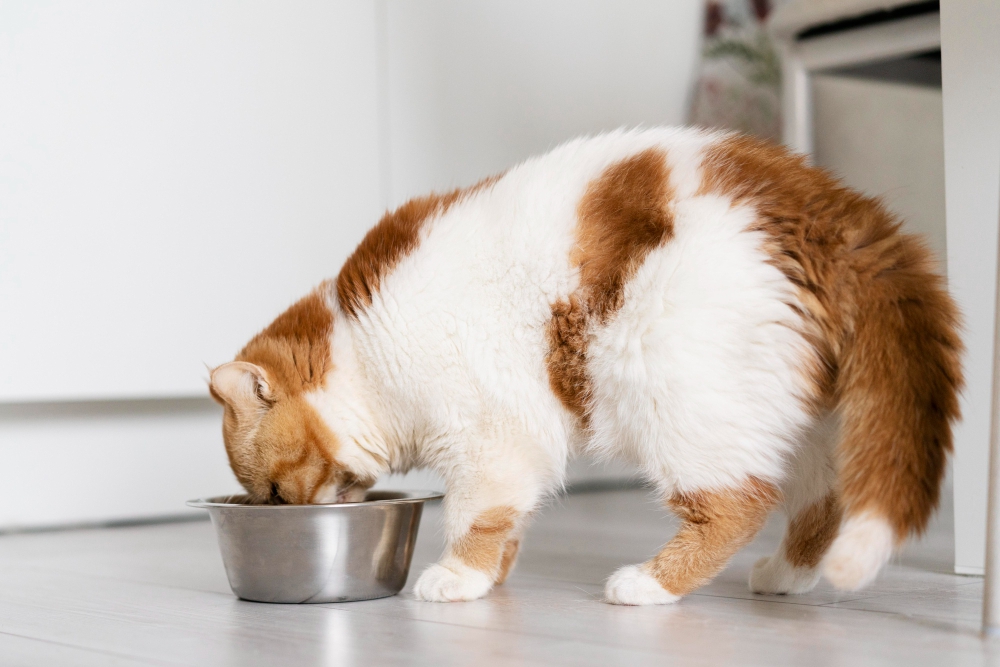Nutrition plays a great role in managing your cat's weight. As a responsible owner, you would want your feline friend to live a healthy and active life; however, obesity has become a growing issue with many cats. Overweight cats have some major health issues, such as diabetes, joint problems, and even shorter lifespans. Perhaps the most common approach that most owners consider is changing to low-fat cat food. Is this right for your overweight cat, though? Let's discuss the pros and cons and what you need to know before making any modifications to your cat's diet.
Nutrition for Feline Animals
Cats are obligate carnivores, which implies that their diet is mainly composed of meat. While cats do require some carbohydrates, their bodies can derive most of the energy from proteins and fats. So, while checking a low-fat cat food product, the basic nutritional needs of these animals have to be fulfilled first.
Low-fat cat foods have been formulated to reduce calorie intake by the amount of fat present. Commercial cat food generally has 20–25% fat, whereas low-fat may be around 10–15%. However, a reduction in fat does not necessarily make it better for each cat, especially when a cat has specific nutritional needs and preferences.
Benefits of Low-Fat Cat Food
Weight Management: Overweight cats can lose weight through low-fat cat food diets, thereby reducing their caloric intake. When your veterinarian determines that your cat requires a weight management program, then in this situation, low-fat cat foods can serve as part of the same.
Readily Digestible: Some cats simply cannot digest heavy fat, and this leads to gastrointestinal problems. If that is true for your feline, then you may very well discover that low-fat cat food renders a more stress-free diet for that feline.
A healthier heart: could imply a reduced intake of fat, which in turn may increase the chances of avoiding potential conditions in the heart, especially if your cat is already elderly or suffering from any chronic condition.
Low-calorie cat food: most low-calorie cat foods contain less fat but are richly complemented with various nutrients and fiber to keep overall health intact while serving for weight reduction purposes.
Possible Drawbacks of Low-Fat Cat Food
Nutritional Balance: All low-fat cat foods are not made equal. Some low-fat foods may compromise on protein or essential nutrients to reduce the fat content. Make sure the food you choose is AAFCO (Association of American Feed Control Officials)-compliant in terms of complete and balanced nutrition.
Palatability: Cats are notorious fussy eaters, and some cats may not like low-fat foods as much as their regular diet. If your cat refuses to eat, then it will serve no useful purpose for weight loss or the overall health of your cat.
More Carbohydrates: In order to fill the place of the leastened fat, some low-fat cat foods will contain more carbohydrates. Cats can absorb carbohydrates; it should not form a large amount of their diet, however. Excessive intake of carbohydrates may make cats overweight and cause many health issues.
Short-term Solution: Although low-fat cat food may be acceptable for a weight-loss period, nutritionally balanced food that benefits your cat should be provided when your cat reaches their target weight.
Ask Your Veterinarian
Before changing your cat's diet, consult your veterinarian. The dentist can assess your cat's weight, current health status, and dietary needs and offer you advice based on your cat's situation. Professional advice will give you an idea whether low-fat cat food is suitable or not for your pet.
Transition
If your veterinarian is willing to have you try the low-fat cat food for your overweight cat, then he or she should also help you slowly transition your cat to this new food source.
Gradual Transition: Mix small amounts of the new low-fat food into your cat's current food over a week or two, gradually increasing the percentage of new food.
Monitor the Cat's Weight and Health: Be observant about your cat's weight and general health during this time of adjustment. If you notice anything unusual or you sense adverse reactions, report it to your veterinarian.
Consistency: After the cat becomes accustomed to the new type of food, be consistent with the feeding schedule. To avoid overfeeding, measure portions in accordance with the prescription by your veterinarian.
Incorporate Exercise: In addition to dietary modifications, exercise through play is a great motivator. Interactive toys, laser pointers, and climbing trees keep your cat burning those calories to maintain a healthy weight.
Conclusion
Low-fat cat food may just be the help you need in setting your overweight cat on the path toward a healthier weight; it is never a miracle, though. It's rather crucial to understand what your cat's nutritional needs are and find a place to voice them with your veterinarian. Remember that the purpose of this cat weight loss plan is not only to lose unwanted pounds from your cat but also to enhance the overall health and life quality of your cat through a balanced diet. Proper nutrition combined with regular exercises can help your kitty live a happier and healthier life.




